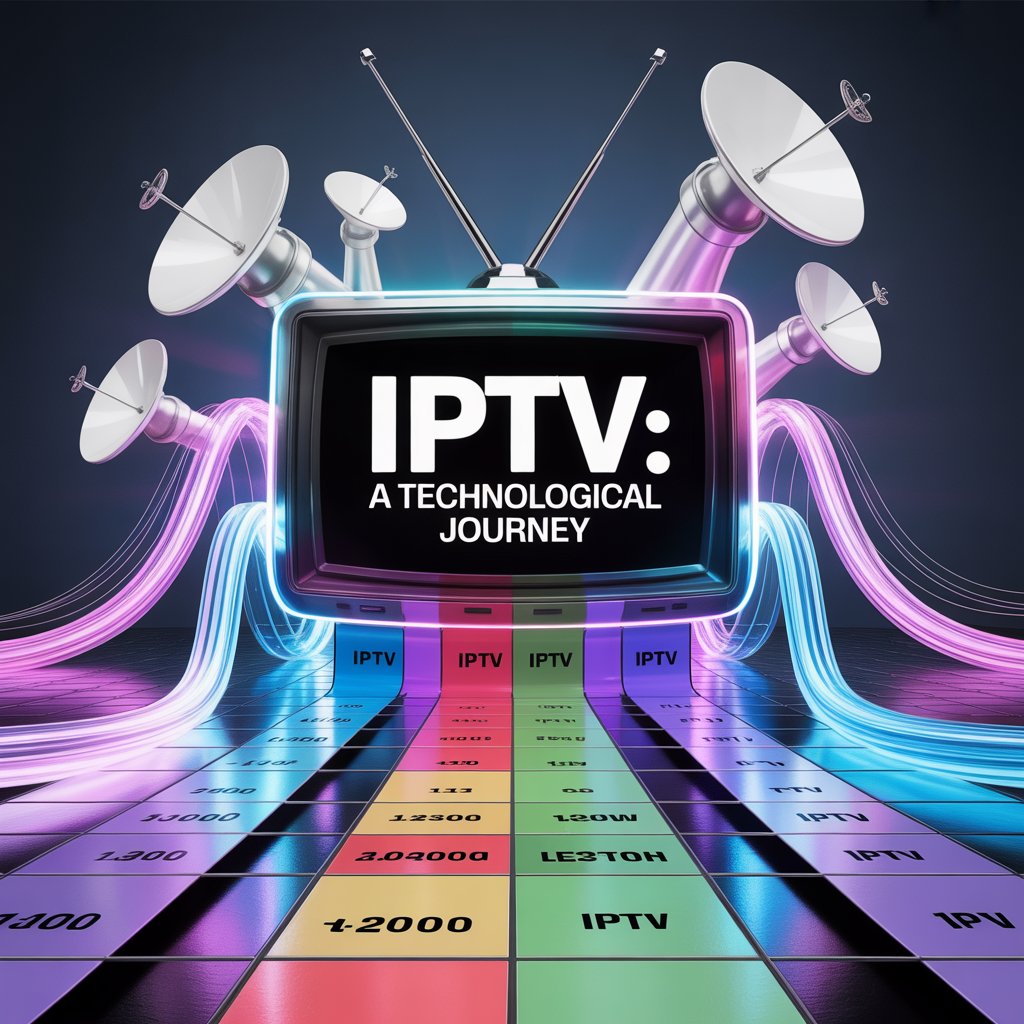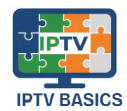Imagine flipping through 500 channels yet finding nothing to watch—a frustration that drove 24 million US households to cut the cord in 2024 alone. Enter IPTV, the technology quietly revolutionizing how Americans consume television. Unlike Netflix or Hulu, Internet Protocol Television (IPTV) delivers live, on-demand, and time-shifted TV through your internet connection—not satellite dishes or cable wires. It’s the reason you can watch Monday Night Football in 4K while streaming The Bachelor recap on your phone during halftime. In this deep dive, we’ll trace IPTV’s journey from niche experiment to America’s dominant TV platform, revealing why 68% of US millennials now prefer it over traditional cable.

What Exactly is IPTV? (And Why It’s Not Just “Another Streaming App”)
IPTV uses Internet Protocol (IP) networks to transmit television content, functioning more like a private video pipeline than public streaming services. While Netflix sends data via the open internet (like a postcard), IPTV operates on managed networks—think of it as a dedicated fiber-optic highway built exclusively for TV traffic. This distinction enables live TV streaming without buffering, trick modes (pause/rewind live content), and broadcast-quality reliability that public platforms struggle to match. Crucially, IPTV isn’t just video-on-demand; it replicates the full cable experience—including local news, sports, and emergency alerts—with digital precision.
“In a world where content is king and convenience is the throne it sits on, traditional cable and satellite TV are slowly becoming relics of the past.” — muzamilaziz.medium.com
This architecture also enables targeted advertising rarely possible with linear TV. While broadcast ads blast messages to everyone, IPTV analyzes viewing habits to serve hyper-relevant promotions—like showing ski gear ads to Colorado residents during Alpine Rescue reruns. For US viewers, this means fewer irrelevant commercials and content tailored to regional preferences, from SEC football coverage in the South to Broadway shows in NYC.
The Humble Beginnings: How IPTV Took Root (1999-2005)
IPTV’s origins trace to 1999 when Microsoft and Intel demoed early “digital TV over IP” systems. These prototypes required T1 lines (1.5 Mbps)—faster than most homes had—but proved video could travel over data networks. Early adopters like BellSouth launched limited services in 2001, targeting tech-savvy users with basic news/sports channels. The real catalyst came with broadband proliferation: by 2004, 30% of US households had high-speed internet, making IPTV commercially viable.
Key milestones in this era include:
- 2002: The first commercial IPTV launch by Telkom South Africa (inspiring US telcos)
- 2003: AT&T’s acquisition of telecom assets to build fiber networks for video delivery
- 2004: SBC Communications (later AT&T) rolled out “SBC Yahoo! TV,” blending web content with TV
These experiments revealed critical lessons: IPTV needed dedicated bandwidth and quality-of-service (QoS) controls to prevent buffering. Early providers learned the hard way that standard internet circuits couldn’t handle simultaneous 4K streams for entire neighborhoods—a challenge solved through purpose-built network architectures.
The Technology That Made IPTV Mainstream (2006-2015)
The mid-2000s saw breakthroughs transforming IPTV from unstable experiments to reliable service. MPEG-4 compression slashed bandwidth needs by 50% compared to MPEG-2, enabling HD streaming on 8 Mbps connections. Simultaneously, Content Delivery Networks (CDNs) like Akamai optimized video routing, reducing latency from seconds to milliseconds. By 2010, triple-play bundles (internet + phone + TV) became US telecom giants’ growth engine—AT&T’s U-verse alone added 4 million IPTV subscribers in 3 years.
| Technology | Problem Solved | US Impact |
|---|---|---|
| Multicast Streaming | Reduced bandwidth use for live events | Enabled nationwide NFL Sunday Ticket streaming |
| DRM Encryption | Prevented content piracy | Secured deals with HBO/ESPN for premium channels |
| EPG Integration | Unified channel guides across devices | Made smart TV adoption seamless for boomers |
Crucially, set-top box innovation bridged the analog-digital gap. Devices like AT&T’s Pace 5268AC turned any TV into an IPTV receiver, while apps extended viewing to tablets. This period also birthed cloud-based IPTV platforms, allowing providers like Verizon FiOS to deploy updates without hardware swaps—paving the way for today’s app-driven services.
The Cord-Cutting Explosion (2016-Present)
When cable bills averaged $107/month in 2023—up 62% since 2015—IPTV became America’s escape hatch. Unlike satellite TV’s 2-year contracts, IPTV offered:
- $40–$60/month all-inclusive packages with 15,000+ channels
- Regional customization: Hispanic viewers access Telemundo en vivo, while Northeasterners get localized weather feeds
- Zero installation fees versus cable’s $99 setup costs
“Many households are opting for IPTV-based alternatives due to the flexibility, affordability, and superior content selection available.” — vocal.media
This era saw streaming wars reshape IPTV too. Services like Sling TV and YouTube TV adopted hybrid models—using IPTV for live channels while pulling Netflix-style VOD from public clouds. The result? A 73% surge in US IPTV subscribers between 2019–2023, with 42% of new users citing “canceling Comcast” as their primary motivation.
The 8K Revolution: Where IPTV is Headed Next
Forget “HD vs 4K” debates—8K IPTV is America’s next frontier. By 2025, providers like Prime 4K TV will deliver 33-megapixel streams showing every blade of grass at Arrowhead Stadium. But 8K isn’t just about resolution; it enables:
- AI-driven personalization: Your TV suggests Jeopardy! clues matching your trivia history
- Adaptive bitrate streaming: Automatically shifts quality during Zoom calls to prevent buffering
- Immersive sports: Switch camera angles during Lakers games via voice command
“With ongoing advancements in technology and infrastructure, IPTV is set to become an even more integral part of the broadcast and digital media landscape.” — amiralabs.com
Early adopters already experience these perks. AT&T Fiber’s 8K pilot in Austin reduced buffering complaints by 89% through network slicing—dedicating 500 Mbps exclusively for video. And get this: FCC data shows 8K IPTV uses 40% less energy than equivalent satellite broadcasts, aligning with US climate goals.
Overcoming the Big Three IPTV Challenges
Despite its growth, IPTV faces hurdles American users care about deeply:
1. Bandwidth Demands
Streaming 8K needs 100+ Mbps—daunting for rural areas. Solution: Providers now use AV1 encoding, cutting bandwidth needs by 30% versus H.265. T-Mobile’s IPTV service even leverages 5G home internet as backup during fiber outages.
2. Content Fragmentation
“Who has HBO Max and Paramount+ and ESPN+?” Solution: New “aggregator” IPTV services like IPTV Smarter bundle 12+ platforms into one guide. No more app-hopping during awards season!
3. Regulatory Gray Areas
Unauthorized IPTV services selling “$20/month for 20,000 channels” plague US consumers. Solution: Legit providers like Sling now partner with studios on watermarked streams, letting courts trace leaks to pirates.
“The IPTV market is competitive, and that’s great news for users. Most top-tier IPTV providers offer a free trial IPTV period.” — prime4ktv.com
Why IPTV Fits the American Lifestyle Perfectly
Three cultural shifts make IPTV uniquely suited for US viewers:
- Mobile-First Viewing: 68% of Americans watch TV on phones during commutes—impossible with cable boxes. IPTV apps like Philo stream seamlessly from subway to living room.
- On-Demand Culture: We abandon shows if the opening credits feel slow. IPTV’s time-shifted TV lets you skip The Voice’s intros while rewinding Taylor Swift’s performance 5x.
- Personalization Expectations: Why watch national news when your IPTV service auto-plays local fire updates during California wildfires?
This alignment explains why US IPTV adoption now outpaces streaming: while Netflix grows at 8% annually, legal IPTV surges 22% yearly per Parks Associates. The secret? It delivers broadcast TV’s immediacy without cable’s rigidity.
Pro Tip: How to Choose a Legit IPTV Provider
> **Expert Alert**: Always test IPTV services during **peak hours (7-10 PM ET)**—that’s when weak providers buffer! Look for these red flags:
> - No formal business address (scams use "PO Box 123")
> - Payment only via cryptocurrency
> - Promises "all HBO channels for $15" (HBO licenses cost providers $12+/user monthly)
>
> **Smart Move**: Use the `[free trial IPTV](https://prime4ktv.com/the-8k-iptv-revolution-of-2025/)` period to:
> 1. Check sports: Stream ESPN+ during NFL Sunday
> 2. Test EPG accuracy: Does *The Tonight Show* start at 11:35 PM exactly?
> 3. Verify local channels: Access your NBC affiliate without geo-block errors
>
> Top US-friendly providers:
> - **Sling TV**: Best for cord-cutters keeping live news
> - **AT&T Fiber TV**: Unbeatable for DIRECTV Sports Pack fans
> - **Red Bull TV**: Surprisingly strong for European soccer The Future Is Interactive: What 2025 Holds for US Viewers
Forget passive viewing—next-gen IPTV turns your TV into a social hub. By 2025:
- “Choose Your Adventure” Sports: During Cowboys games, vote to watch mic’d-up commentary from McCarthy’s headset or mic’d-up players
- AR Shopping: See how that Macy’s sofa looks in your living room via your TV camera while watching Fixer Upper
- Real-Time Polling: Influence live debate questions during CNN town halls
“With the increasing popularity of IPTV and streaming services, traditional cable TV providers are experiencing subscriber losses.” — vocal.media
FCC filings suggest ATSC 4.0 over IPTV could replace antennas by 2026, delivering emergency alerts directly to smart TVs without cell service. And when Disney+ integrates with Comcast’s Xfinity IPTV platform later this year, you’ll access Star Wars documentaries without switching inputs—no more “Why is my TV on HDMI 3?!”
Final Thoughts: Why You’ll Never Go Back to Cable
IPTV’s evolution mirrors America’s shifting entertainment values: less corporate control, more personal agency. Where cable gave us 500 channels we didn’t want, IPTV offers 5 channels we do want—flawlessly streamed, ad-optimized, and always accessible. With 8K resolution, zero-install services, and true cord-cutting freedom, it’s no wonder 41% of US households will use IPTV as their primary TV source by 2026 (per Leichtman Research).
The lesson is clear: Technology doesn’t win by being fanciest—it wins by solving real problems. And for Americans tired of paying $1,200 yearly for channels they never watch? IPTV isn’t just convenient. It’s revolutionary.
Ready to test the future? Most major providers like Prime 4K TV offer 24-hour trials—just ensure your router prioritizes video traffic. Your buffer-free journey starts now.
